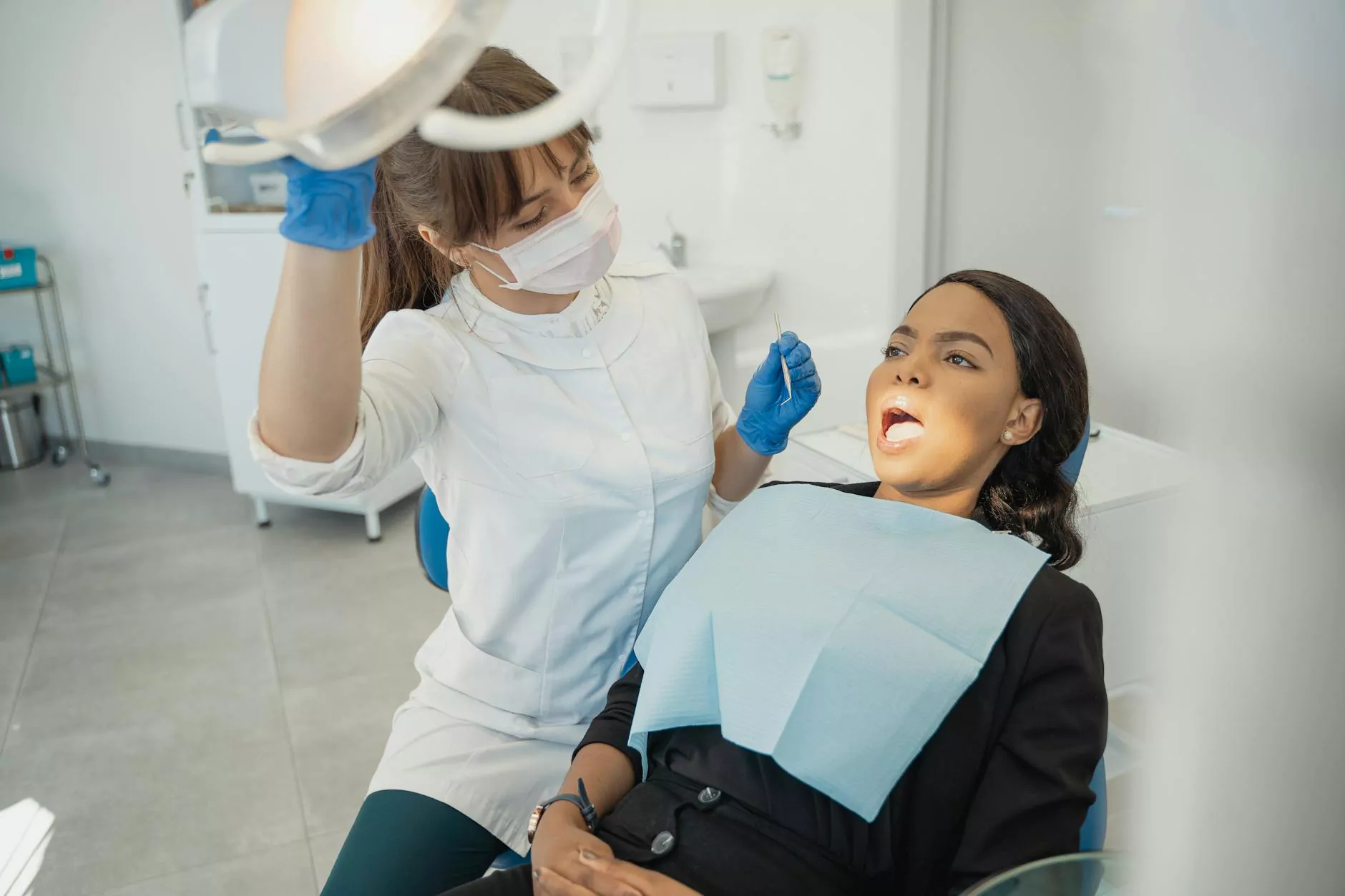Understanding the 4 Stages of Frozen Shoulder: A Complete Guide to Recovery and Treatment

Frozen shoulder, medically known as adhesive capsulitis, is a complex condition characterized by stiffness, pain, and loss of mobility in the shoulder joint. It impacts daily activities, affects quality of life, and can be particularly challenging to manage without proper knowledge and intervention. In this comprehensive guide, we delve into the 4 stages of frozen shoulder, offering detailed insights into each phase, their symptoms, causes, and effective treatment protocols to help you navigate this condition confidently.
What Is Frozen Shoulder?
Frozen shoulder is a condition marked by inflammation, tightening, and thickening of the shoulder capsule—the tissue that surrounds the shoulder joint. This process progressively restricts movement and causes persistent pain, which varies in intensity through different phases of the disease. Understanding the 4 stages of frozen shoulder is essential for timely intervention and optimized recovery, raising awareness about the importance of proper medical assessment and tailored therapy options.
The Significance of Recognizing the 4 Stages of Frozen Shoulder
Identifying the stage of frozen shoulder you're experiencing allows healthcare professionals to develop a precise treatment plan, reduce pain, and restore shoulder function effectively. Each stage features distinct symptoms and pathological changes, requiring different management strategies. Early diagnosis and appropriate interventions are key to preventing long-term impairment and accelerating the recovery process.
Detailed Overview of the 4 Stages of Frozen Shoulder
1. The Freezing Stage: Onset and Initial Symptoms
The freezing stage typically lasts from 6 weeks to 9 months. During this early phase, patients experience increasing pain and gradually decreasing range of motion. The pain is often described as a dull ache, but it can become sharp with certain movements or activities.
- Symptoms: Increasing shoulder pain, stiffness, difficulty in lifting or reaching overhead, pain at night interfering with sleep, and mild swelling.
- Pathophysiology: Inflammation begins within the joint capsule, initiating thickening and scarring. This results in restricted movement and persistent discomfort.
- Management Tips: Gentle range-of-motion exercises, anti-inflammatory medications, physical therapy, and avoiding overuse to prevent further inflammation.
2. The Frozen Stage: Peak Stiffness and Restricted Mobility
The frozen stage can last anywhere from 4 months to a year. Despite decreasing pain relative to the initial phase, the shoulder becomes significantly stiff, limiting daily activities such as dressing, grooming, or lifting objects.
- Symptoms: Severe stiffness and limited shoulder mobility, with persistent but less intense pain compared to the freezing stage.
- Pathophysiology: The joint capsule remains thickened and contracted, with fibrosis replacing inflamed tissue, leading to a rigid shoulder.
- Management Tips: Physical therapy focusing on passive and active stretching, targeted exercises, and modalities like ultrasound or heat therapy.
3. The Thawing Stage: Gradual Recovery and Restoration of Function
The thawing stage marks a slow and ongoing process of improved shoulder mobility, lasting from 6 months to 2 years. Pain continues to decrease, and normal movement gradually returns, but patience and consistent therapy are critical.
- Symptoms: Progressive reduction in stiffness, increased ease of movement, and less pain during activity.
- Pathophysiology: The fibrosis and thickening resolve, allowing tissues to regain elasticity, and scar tissue remodels.
- Management Tips: Continued physical therapy, stretching, and strengthening exercises; adding active movement to facilitate recovery.
4. Complete Resolution or Chronic Adaptation
The final stage involves a complete resolution of symptoms or a transition into a chronic, but less symptomatic, state. Some patients may experience full recovery, while others might have residual stiffness or mild discomfort.
- Symptoms: Near-normal shoulder movement; minor residual stiffness or discomfort possible.
- Pathophysiology: The joint structures stabilize, and the inflammation heals fully or becomes a chronic, low-grade condition.
- Management Tips: Maintenance exercises, strengthening routines, and occasional physiotherapy to sustain shoulder health.
Causes and Risk Factors of Frozen Shoulder
Understanding what causes the 4 stages of frozen shoulder can help in prevention and early intervention. Factors include:
- Injury or trauma to the shoulder
- Prolonged immobility due to surgery, fractures, or neurological conditions
- Medical conditions such as diabetes, thyroid disorders, Parkinson’s disease, or cardiovascular disease
- Age and gender: More common in people aged 40-60, particularly women
Effective Treatment Strategies for Each Stage of Frozen Shoulder
Targeted treatment aligned with each stage of frozen shoulder optimizes outcomes and minimizes discomfort. Here’s a detailed look at management approaches:
Conservative Treatments
- Physical therapy: Customized exercises, stretches, and manual therapy to improve mobility
- Medications: NSAIDs or corticosteroids to control pain and inflammation
- Modalities: Ultrasound, heat or cold therapy, and electrical stimulation
- Activity modification: Avoiding activities that exacerbate symptoms or cause further injury
Interventional Procedures
- Joint injections: Corticosteroid injections providing relief during freezing and frozen stages
- Hydrodilatation: Injection of fluid into the joint to expand the capsule and improve mobility
- Surgical Options: Arthroscopic capsular release in refractory cases where conservative therapy fails
The Role of Chiropractors and Healthcare Providers in Managing Frozen Shoulder
Expert healthcare professionals, including chiropractors, specialize in diagnosing and managing complex musculoskeletal conditions like frozen shoulder. They employ a combination of manual therapy, targeted exercises, and patient education to facilitate healing. Since iaom-us.com offers a multidisciplinary approach within Health & Medical, Education, and Chiropractors categories, patients benefit from tailored treatment plans to expedite recovery.
Avoiding Common Pitfalls During Recovery
- Overexertion: Pushing through pain can worsen inflammation or cause further injury
- Neglecting therapy: Discontinuing exercises prematurely stalls progress
- Ignoring early symptoms: Delaying treatment can prolong the 4 stages of frozen shoulder and impair results
- Not maintaining activity: Complete immobilization should be avoided; gentle, guided movements are essential
Preventing Future Episodes of Frozen Shoulder
Maintaining shoulder health involves consistent stretching, strengthening exercises, and addressing risk factors proactively. Managing underlying health conditions like diabetes or thyroid issues minimizes the likelihood of recurrence.
Final Thoughts: Navigating the 4 Stages of Frozen Shoulder with Confidence
Understanding each phase of frozen shoulder empowers patients and professionals to adopt effective treatment strategies at the right time. Early intervention, personalized therapy, and patient commitment are essential to minimize the duration of the condition and maximize functional recovery. Whether you are seeking support through chiropractic care, physical therapy, or medical intervention, comprehensive knowledge about the 4 stages of frozen shoulder is a vital step towards regaining shoulder agility and improving quality of life.
For expert assistance tailored to your specific condition, consult qualified healthcare providers at iaom-us.com. Our team of specialists is dedicated to advancing health, education, and wellness strategies to ensure optimal recovery from frozen shoulder and related musculoskeletal conditions.









